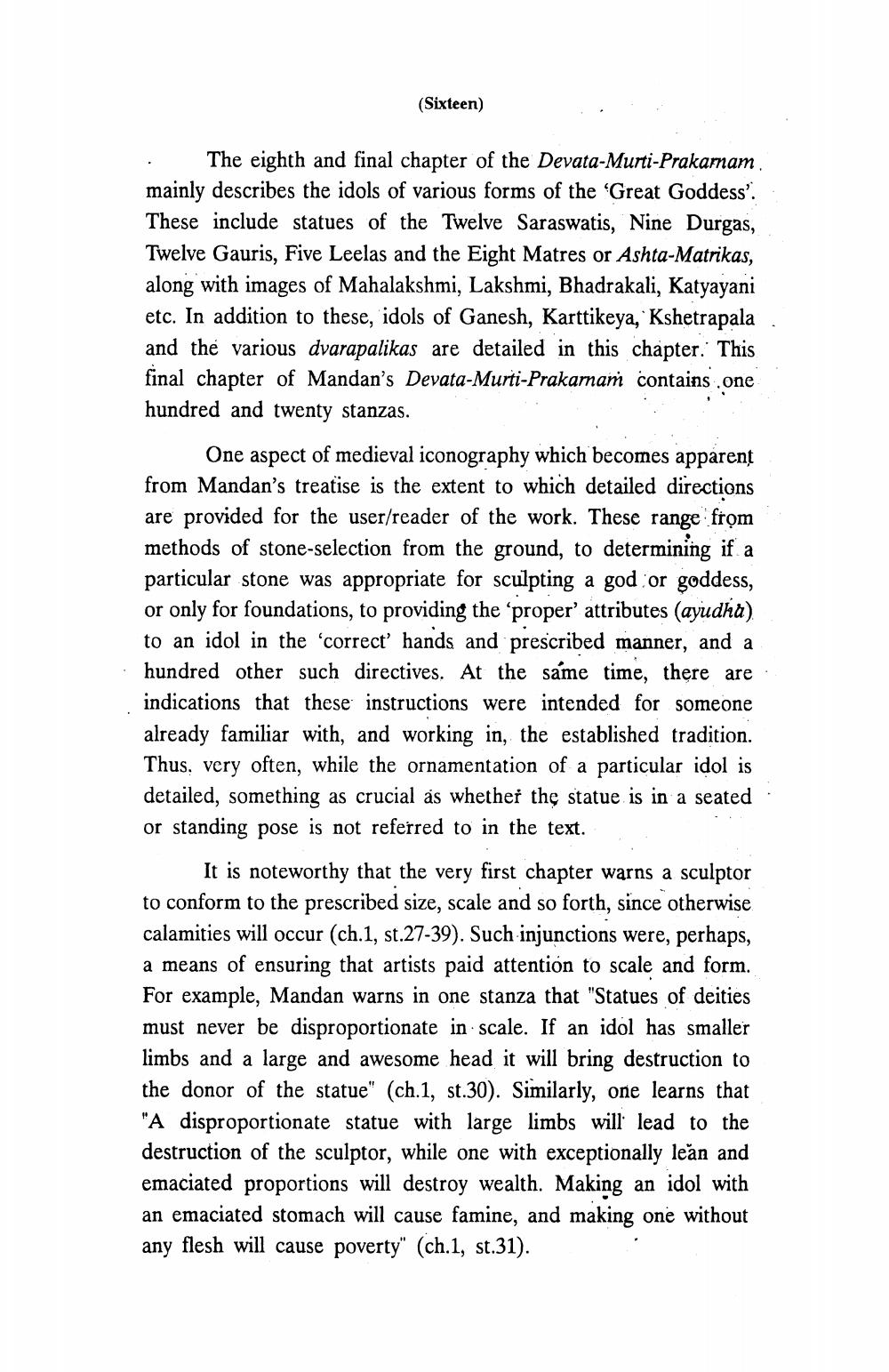________________
(Sixteen)
The eighth and final chapter of the Devata-Murti-Prakaram, mainly describes the idols of various forms of the Great Goddess'. These include statues of the Twelve Saraswatis, Nine Durgas, Twelve Gauris, Five Leelas and the Eight Matres or Ashta-Matrikas, along with images of Mahalakshmi, Lakshmi, Bhadrakali, Katyayani etc. In addition to these, idols of Ganesh, Karttikeya, Kshetrapala and the various dvarapalikas are detailed in this chapter. This final chapter of Mandan's Devata-Murti-Prakarnaṁ contains one hundred and twenty stanzas.
One aspect of medieval iconography which becomes apparent from Mandan's treatise is the extent to which detailed directions are provided for the user/reader of the work. These range from methods of stone-selection from the ground, to determining if a particular stone was appropriate for sculpting a god or goddess, or only for foundations, to providing the proper attributes (ayudha) to an idol in the 'correct' hands and prescribed manner, and a hundred other such directives. At the same time, there are indications that these instructions were intended for someone already familiar with, and working in the established tradition. Thus, very often, while the ornamentation of a particular idol is detailed, something as crucial as whether the statue is in a seated or standing pose is not referred to in the text.
It is noteworthy that the very first chapter warns a sculptor to conform to the prescribed size, scale and so forth, since otherwise calamities will occur (ch.1, st.27-39). Such injunctions were, perhaps, a means of ensuring that artists paid attention to scale and form. For example, Mandan warns in one stanza that "Statues of deities must never be disproportionate in scale. If an idol has smaller limbs and a large and awesome head it will bring destruction to the donor of the statue" (ch.1, st.30). Similarly, one learns that "A disproportionate statue with large limbs will lead to the destruction of the sculptor, while one with exceptionally lean and emaciated proportions will destroy wealth. Making an idol with an emaciated stomach will cause famine, and making one without any flesh will cause poverty" (ch.1, st.31).




